
Sciences & Technology
On the hunt for ancient reefs
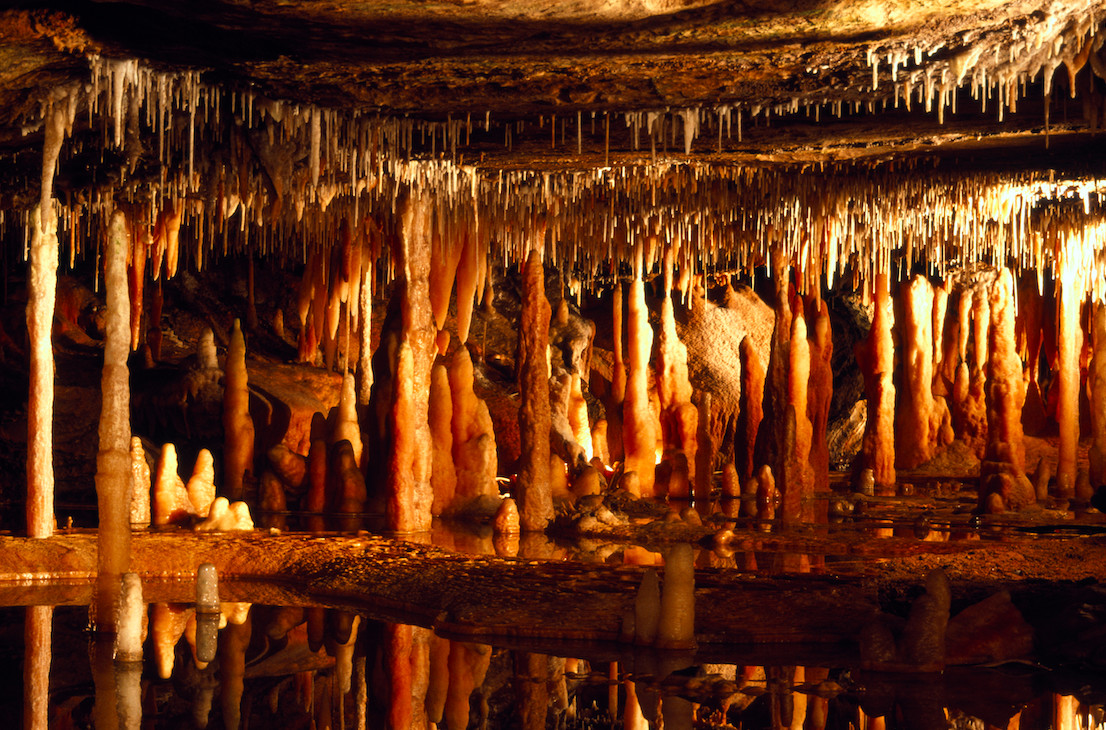
Research using the age of caves shows the Eastern Highlands of Victoria have been steadily growing at a rate of 76 metres every million years, and are still going
Published 20 May 2020
Mountains are universally admired for their aesthetic appeal and widely seen as impressive and unchanging features of our landscape.
But to geologists, uncovering the secret stories surrounding when and how mountains form provides an added layer of appreciation – and an active field of research.
Many would be surprised to hear that Australia — often unfairly portrayed as an old and lazy continent with little geological activity — is an excellent area in which to study these processes.
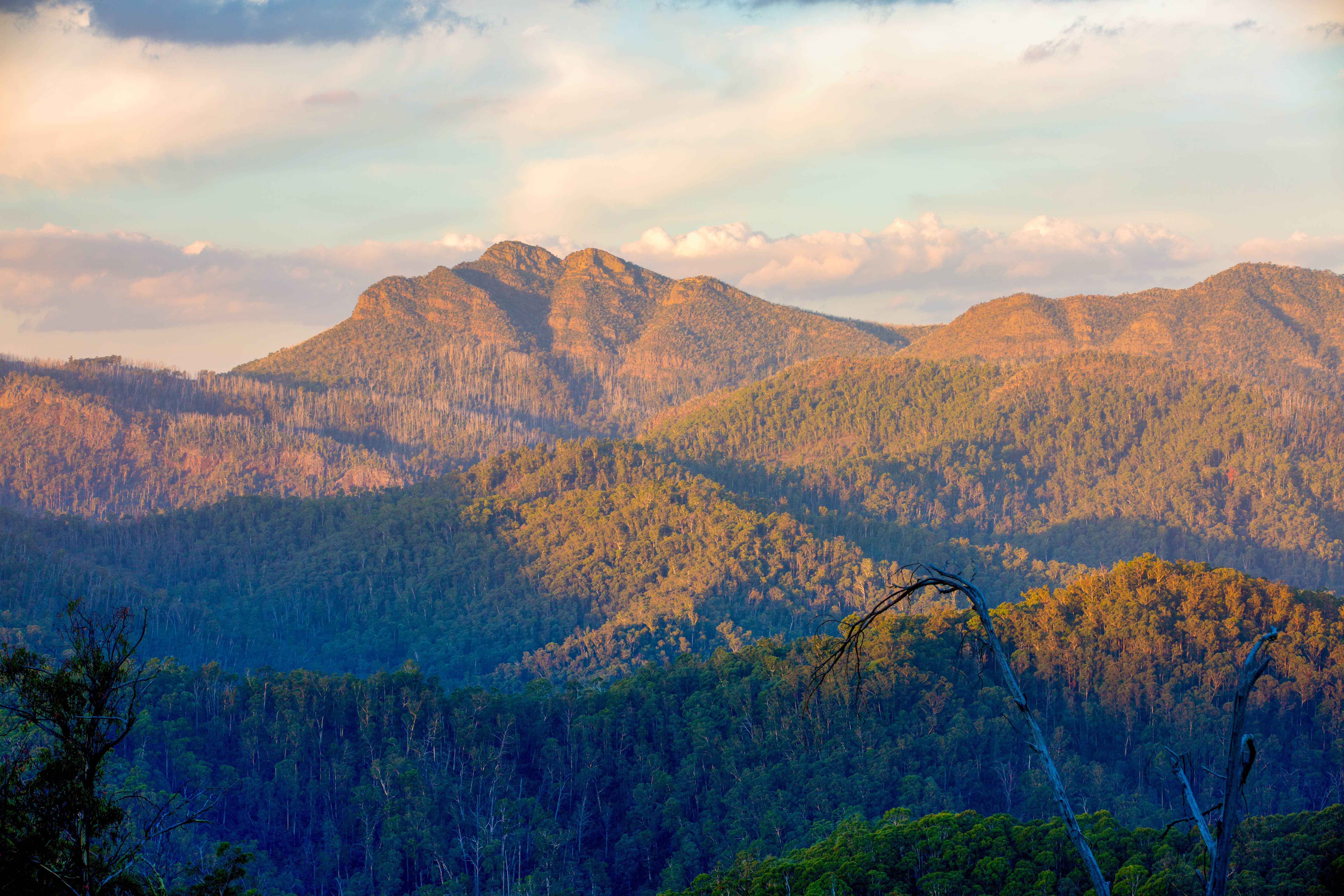
While we do not have youthful mountain ranges like the Himalaya or the Swiss Alps, Australia is still a tectonically active continent, as many residents of East Gippsland in Victoria can appreciate every time they feel an earthquake.
In fact, our new research published in the international journal Geology provides compelling evidence for continued mountain building processes in Australia since about 3.5 million years ago and continuing into the present.

Sciences & Technology
On the hunt for ancient reefs
The origin of the Eastern Highlands of Victoria, including popular skiing destinations such as Mt. Baw Baw and Mt Buller, has been a contentious theme amongst Australian geologists.
Evidence from rocks in the highlands suggests that these mountains rose up approximately 90 million years ago when the Tasman Sea between Australia and New Zealand opened up.
This interpretation is widely supported, and it is probable that most of the mountains along South East Australia can trace their origins back to this time.
However growing evidence suggests the importance of additional, younger pulses of mountain uplift much later in history around five million years ago.
Scientists drilling into ocean sediments in Bass Strait observed a sharp contrast in the rock types from this era and this suggests that these sediments were created by new mountain growth, which then eroded into the seas.
The cause of this more recent uplift is debated; but one leading hypothesis points to our friendly rivalry with our New Zealand neighbours. New Zealand is a very active region experiencing ‘classical’ plate-tectonic mountain building: one plate is slipping under the other and creating their own Southern Alps in the process.
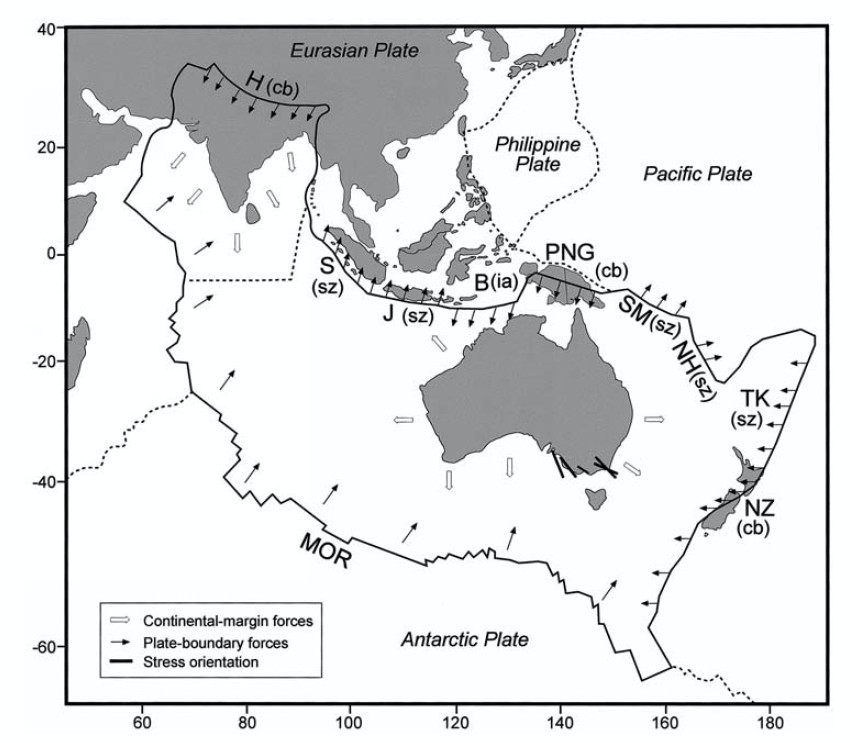
The Australian and Pacific plates share a common boundary, and this is where New Zealand is being deformed.
Many of the forces involved at this boundary may be propagated into the Australian plate as tectonic stress. Some of this tectonically-induced stress is released as uplift of the mountains in SE Australia.
So even though East Gippsland is removed from this boundary action, it may still feel effects related to these tectonic forces. This subtle modification of classical plate tectonic theory can help explain the frequent, small earthquakes observed along southeast Australia.

This new research seeks to confirm the theory of young uplift by using a surprising new yardstick: stalagmites and flowstones in caves.
Caves are subterranean passages that form in limestone and southeast Australia has many world-class cave sites, particularly around the regional town of Buchan in Victoria.
Our team from the Isotope Geochemistry Group in the School of Earth Sciences worked closely with Parks Victoria rangers at Buchan caves and local cavers during this study.
Caves typically form when subterranean rivers dissolve away the limestone forming long, flooded passages. During regional uplift, these caves rise above the local water-table and drain.
Once this happens, conditions are perfect for the drip-by-drip creation of stalagmites, stalactites, and flowstones – technically called speleothems.
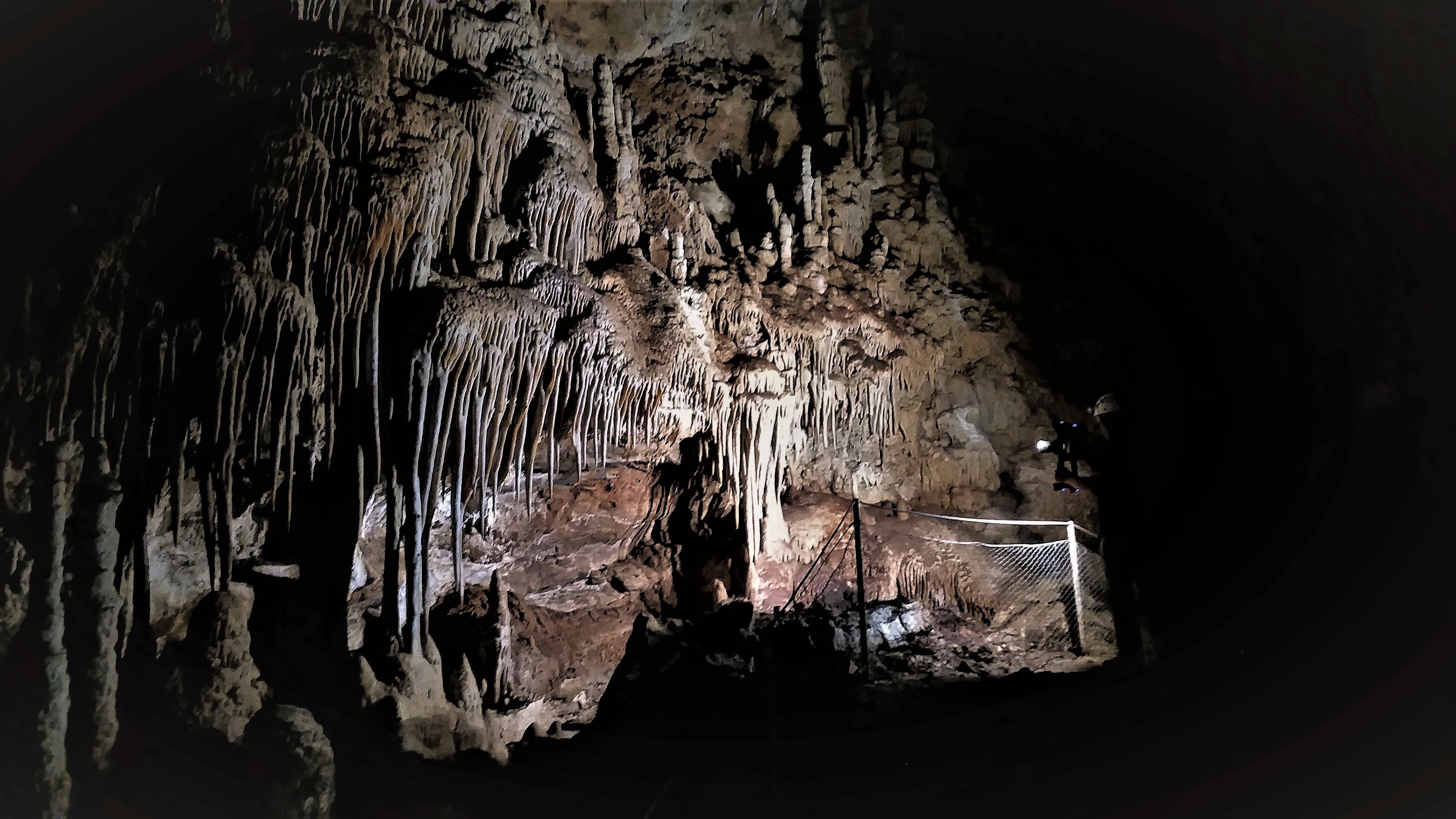
As speleothems cannot form until after the cave has drained, the oldest measured sample provides our best estimate of when the cave rose above the water table. If we repeat the process at many different caves at unique elevations within the limestone, we can reconstruct an uplift trajectory through time.
The oldest speleothem age estimates when the cave passed the water table. Using all caves from the landscape, we can model when and how quickly tectonic uplift has lifted the region above the water table.

Sciences & Technology
Probing Earth’s deep and ancient secrets
We explored ten caves and collected small fragments of speleothem ‘rubble’ – naturally broken fragments so as not to harm the beautiful, intact formations in these caves.
Recovering samples from caves requires climbing down through the passages and sometimes even crawling through tight squeezes.
Once we find a likely specimen, we take the sample back to the lab and determine their ages by radiometric U-Pb dating. The University of Melbourne hosts one of very few laboratories in the world specialising in this type of analysis which is used to date rocks.
Our research shows a clear trend between oldest speleothem (cave age) and height in the landscape.
The data suggests that the Buchan region has been steadily uplifting at a rate of 76 metres every million years, beginning at least 3.5 million years ago. This means that some speleothems have been sitting in dark caves undisturbed for over three million years.
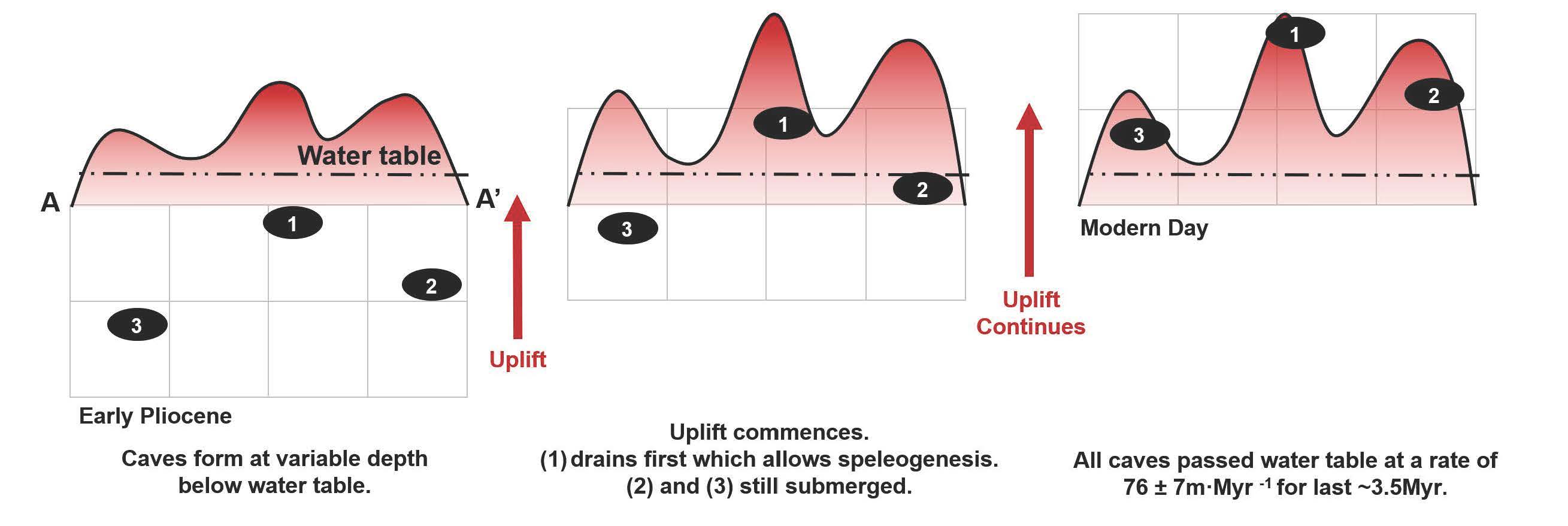
The new speleothem-based data advances the case for the ‘young uplift’ theory. At least 250 metres of additional height in the East Victorian Highlands appears to have been gained in the last few million years.
The new research showcases a new – and rather unique – method for measuring the uplift of mountains. Excitingly, the technique is likely to also work in other caves across the world for regions with ‘recent’ tectonic activity.
It’s amazing to think that rising mountains in New Zealand could lead to draining caves in southeast Australia; it just goes to show how interconnected our world really is.
We would personally like to encourage everyone to visit the stunning Buchan caves located a few hours drive from Melbourne, these amazing sites are just as breathtaking as the 12 Apostles. Your support can help this regional gem recover from the difficulties of early 2020.
Banner: Buchan Caves Reserve, stalactites and stalagmites inside a cave. Getty Images